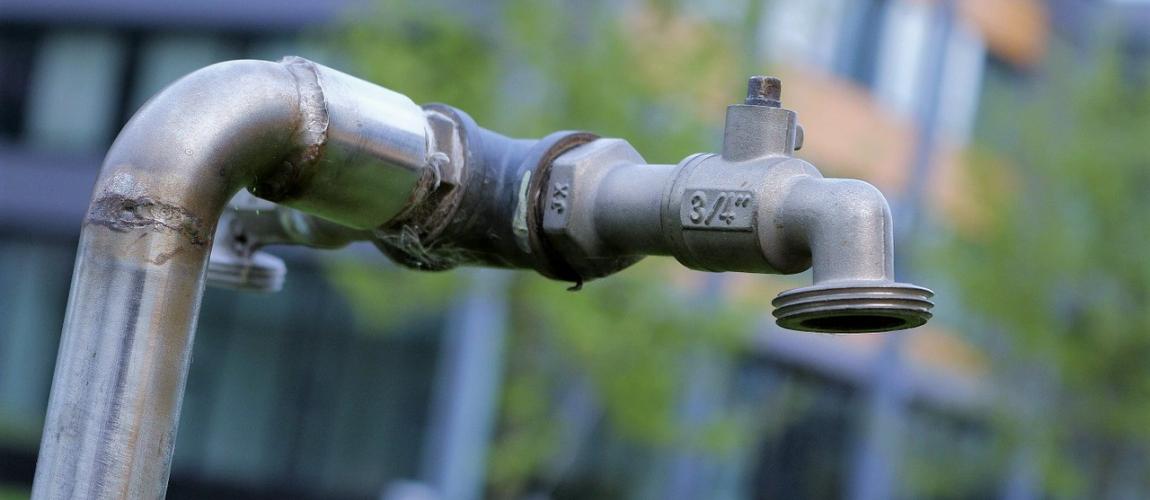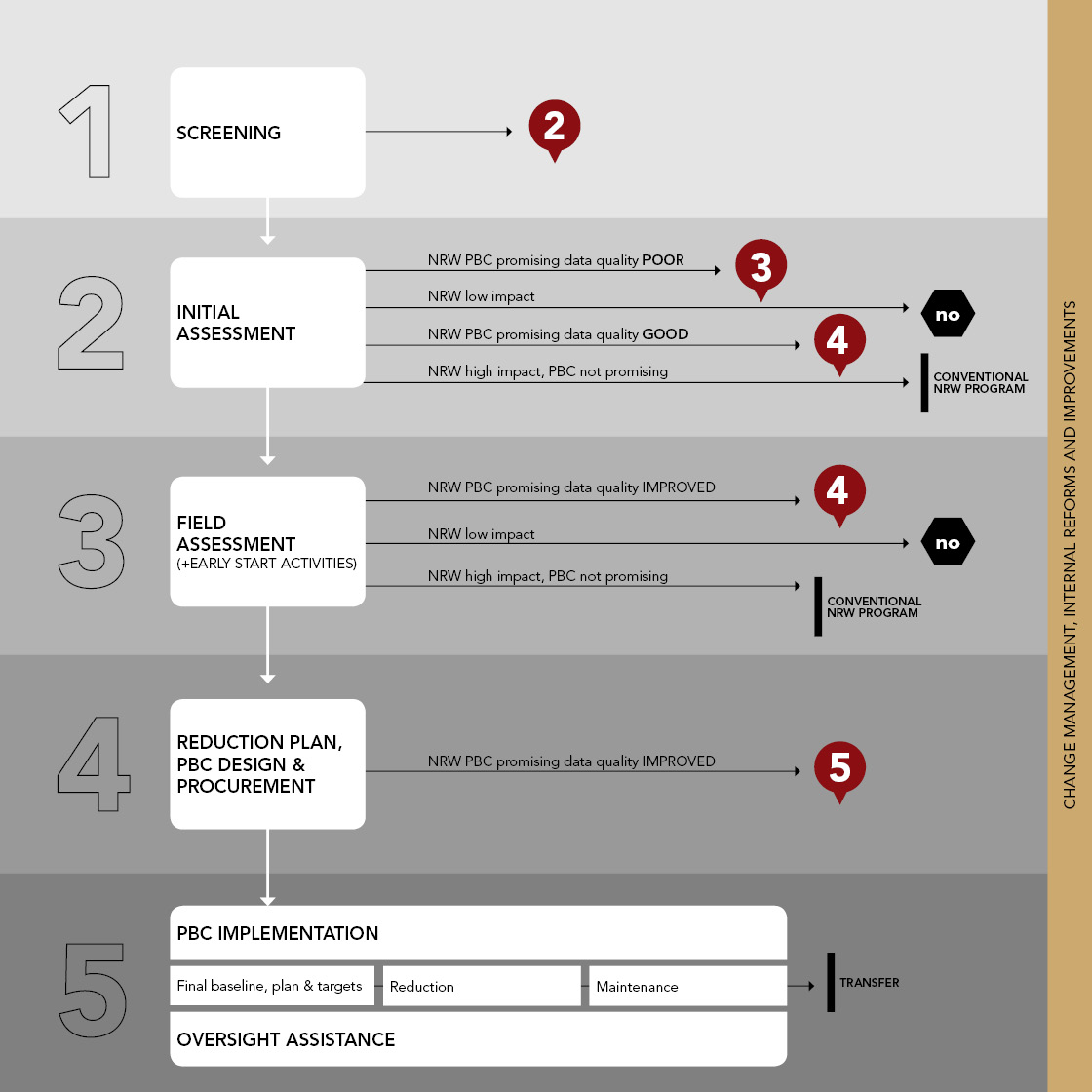Performance-Based Contracting Tools for Non-Revenue Water Reduction Project Preparation Process

Photo Credit: Image by Pixabay
Find steps in PBC Tools for Non-Revenue Water Reduction Project Preparation Process below:
In this step, a utility: See Chapter 3 of the Operational Manual for more details. An initial assessment of site-specific data (such as performing a water balance via EasyCalc) helps determine whether an NRW reduction is appropriate and whether a PBC is suitable. One output of this phase is the initial project concept, which defines the objectives, the functional and geographic scope of the project, the indicators and targets to be used, the indicative cost, and an indicator of financial viability. See Chapter 4 of the Operational Manual for more details. This phase involves collecting data, analyzing losses, testing meter accuracy, measuring un-metered consumption, and estimating the severity of illegal connections, among other factors. This information, which is compiled with the help of the practices rating tool, helps determine the scale of the NRW problem in greater detail and what type of PBC is most suitable and the degree to which risks can be transferred to the private operator. The level of detail undertaken through the field assessment depends on time and funding available. See Chapter 5 of the Operational Manual for more details. In this phase, the technical, financial, economic, and institutional factors for NRW reduction are analyzed in detail. This is followed by an analysis of different PBC designs that incentivize NRW reduction and ensure a cost-effective allocation of risks between the utility, contractor, and other parties. The design considers aspects such as financial viability, duration, data quality, risk transfer, incentives, private sector interest and capabilities, technical feasibility, and other factors. Procurement, which entails generating market interest, evaluating bids, and contractor selection, follows the approval of the indicative design. This step helps select the most suitable private contractor to implement the project through a transparent bidding process. See Chapters 6, 7 and 8 of the Operational Manual for more details. In most cases, a contract management unit is necessary to oversee contractor performance, ensure compliance, inspect and verify work, and adjust contract terms where necessary. The contract management unit will also prepare a transition and sustainability plan to maintain long-term NRW reduction. Expert support from consultants may be temporarily needed as the unit is set up. Given that contractor payments are tied to performance, an independent verification agent should be hired (for example, a firm or expert consultants) to measure contract performance. See Chapter 9 of the Operational Manual for more details.
Step 1: Screening
Step 2: Initial Assessment
Step 3: Field Assessment
Step 4: Reduction Plan, Contract Design and Procurement
Step 5: Contract Implementation and Oversight Assistance
Updated: May 24, 2024
TABLE OF CONTENT
Project Preparation Process
Related Content
Additional Resources
Select WBG PPP Toolkits
Featured Section LinksEnergy & Power PPP Toolkits
Transportation PPP Toolkits
Municipal Solid Waste and Waste Management PPP Toolkits
Water & Sanitation PPP Toolkits
Municipal Solid Waste and Waste Management PPP Toolkits
UNDP - Toolkit for Pro-Poor Municipal PPPs
Climate Change Toolkits
Gender PPP Toolkit
Other PPP Toolkits
Toolkits for Public-Private Partnerships
Keywords